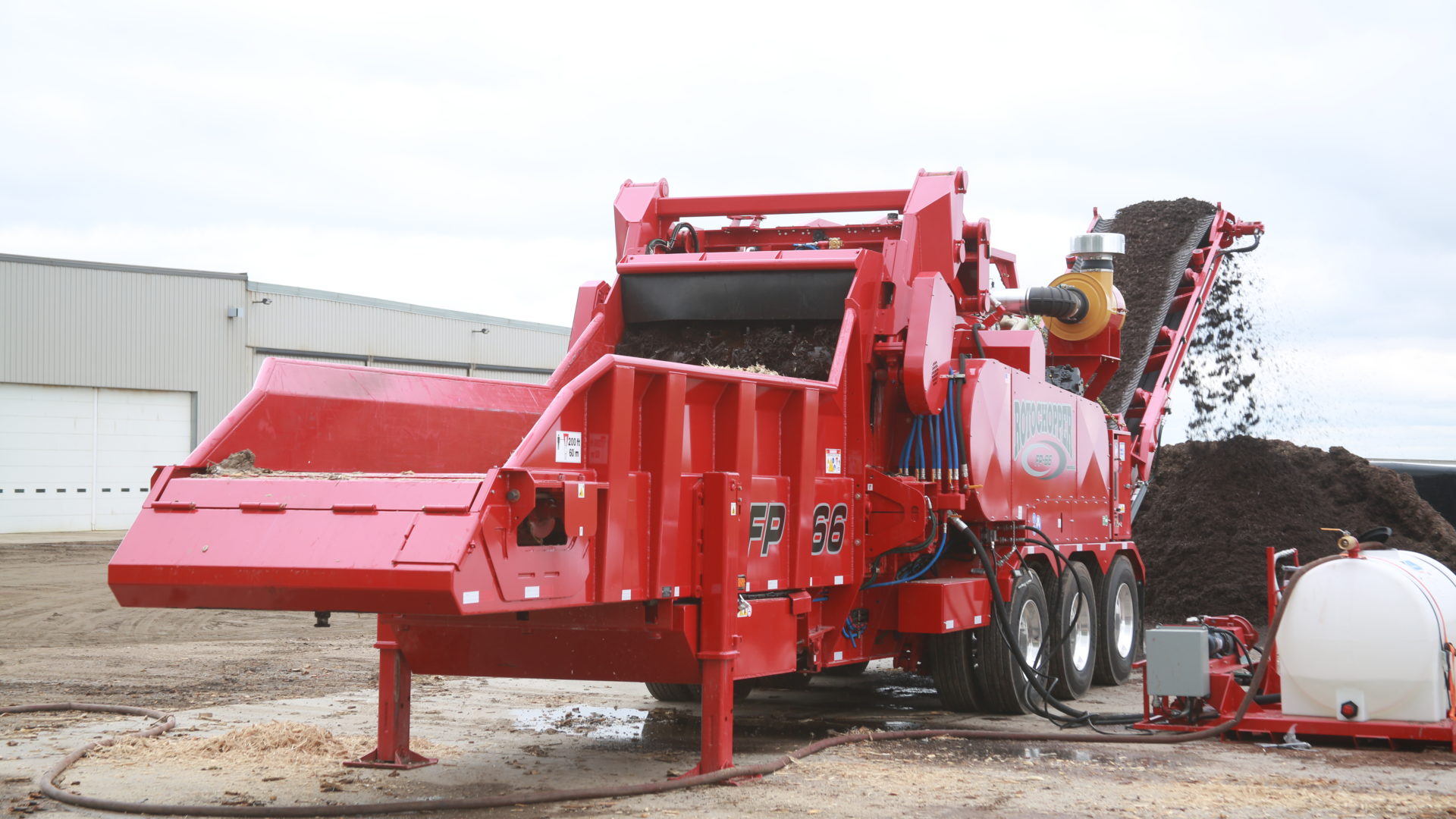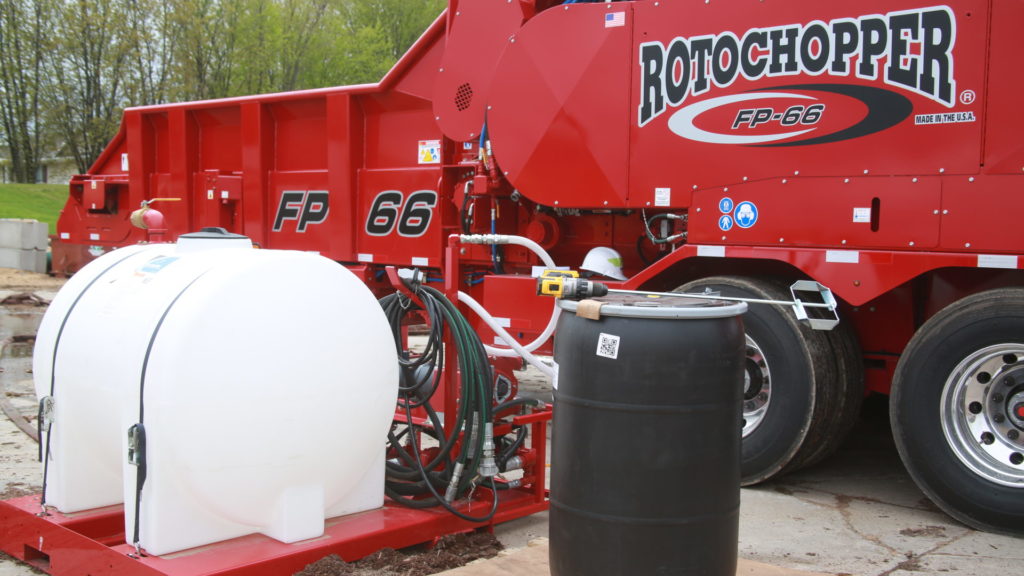
When grinding and coloring there are multiple factors that could affect your end-product characteristics, including feedstock, moisture content, screen size and water rate. Here are some tips to fine tune the settings on your Rotochopper grinder with on-board colorizer.
How to Adjust Your Colorizer Settings
Colorant and water application ratios will vary depending on shading preference, wood species, moisture content of the wood and other factors. Use the following numbers for colorant and water as starting points and adjust the settings as needed to meet your desired product specifications.
- Three (3) pounds of colorant per cubic yard
- Twelve (12) gallons of water per cubic yard
Also remember, colorant weight and viscosity vary between colors and brands.
Flow rates of each pump may vary according to pump conditions, equipment maintenance, water sediment levels, weights of colorants, and other factors. Pump settings may not directly correspond to output. Adjust the pump speed in small increments until you reach your desired application rate, recording measurement between adjustments.
Ensuring Even Color Distribution
Even color distribution while grinding can be achieved by ensuring all raw material is distributed evenly across the width of the infeed conveyor and all hoses and injection ports are free of obstructions. Adjust the flow rates with pump speed and balancing valve until proper water and colorant application is achieved, being sure to start with all manifold shut-off valves fully opened.
If you are experiencing uneven color distribution, first, make sure you are running enough water. If you are running short on water, it will cause uneven color distribution. If product on the discharge conveyor is not evenly colored from side to side, check ports and hoses for obstructions. Uneven coloration may result from uneven pressure levels at different injection ports. To correct uneven pressure levels, partially close valves that correspond to areas of highest colorant application, in order to even out pressure to each port.
Some other factors to consider when adjusting the color settings on your grinder are wood moisture content, screen size and water rate.
Water flow rate must be matched to the wood moisture content. Green wood requires less moisture content than dry wood. Very dry wood may require up to 30 gallons of water per cubic yard and will typically darken within several hour of colorant application.
The screen size you choose will also determine the amount of water and colorant necessary. Larger screen sizes may require increased water and colorant than smaller screens to achieve the same coloration.
The optimal water application rate is the lowest level of water that can achieve proper coloring. Advantages of using less water are: higher production capacity, less chance of screen plugging, better color integrity and longevity, less material build-up on conveyors and other components, better ferrous metal separation with magnetic head pulley or cross-belt conveyor, less work site mess, dryer and lighter finished product, and less run-off from end-product piles.
For more specific information on fine tuning the colorizer on your specific Rotochopper grinder contact our Customer Support Team at service@rotochopper.com or 320.548.3586.

